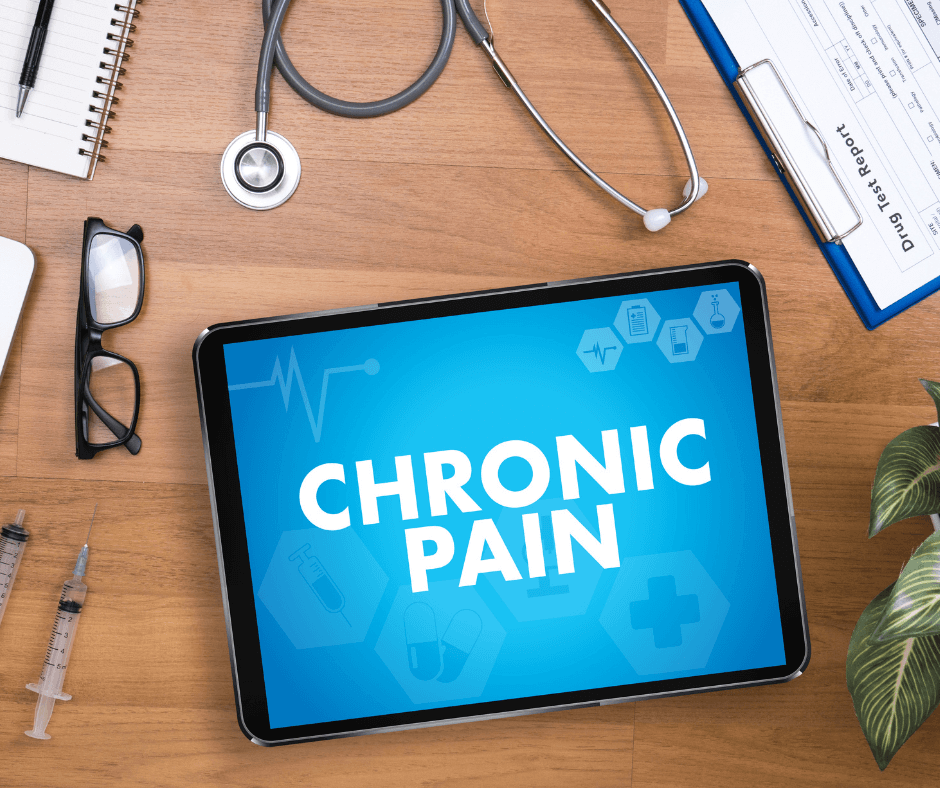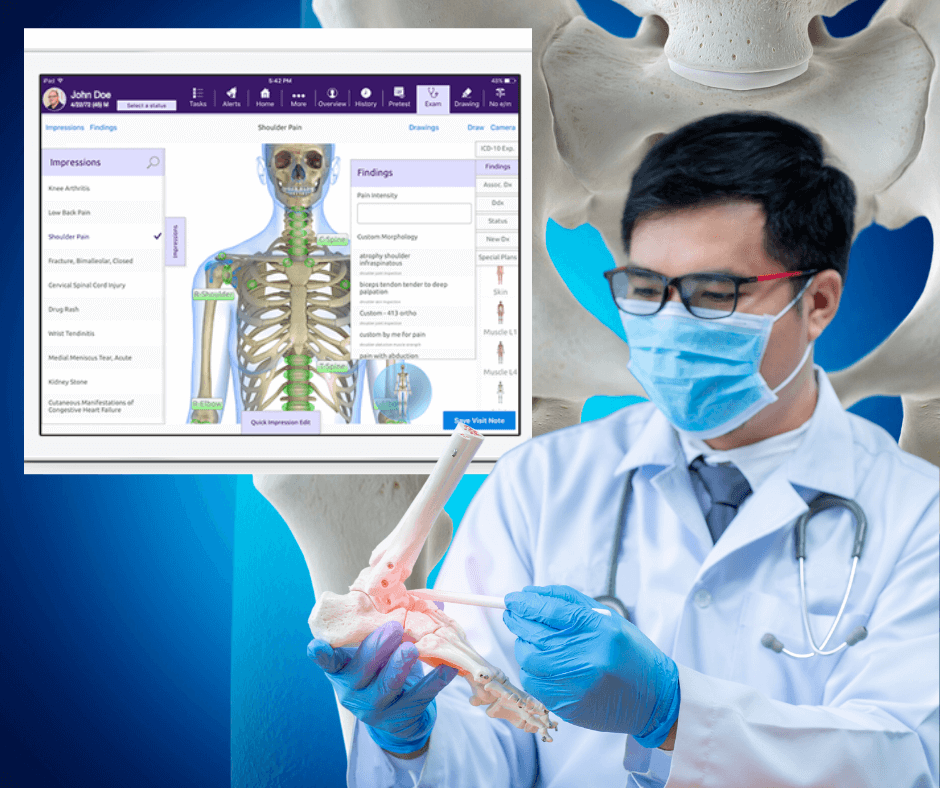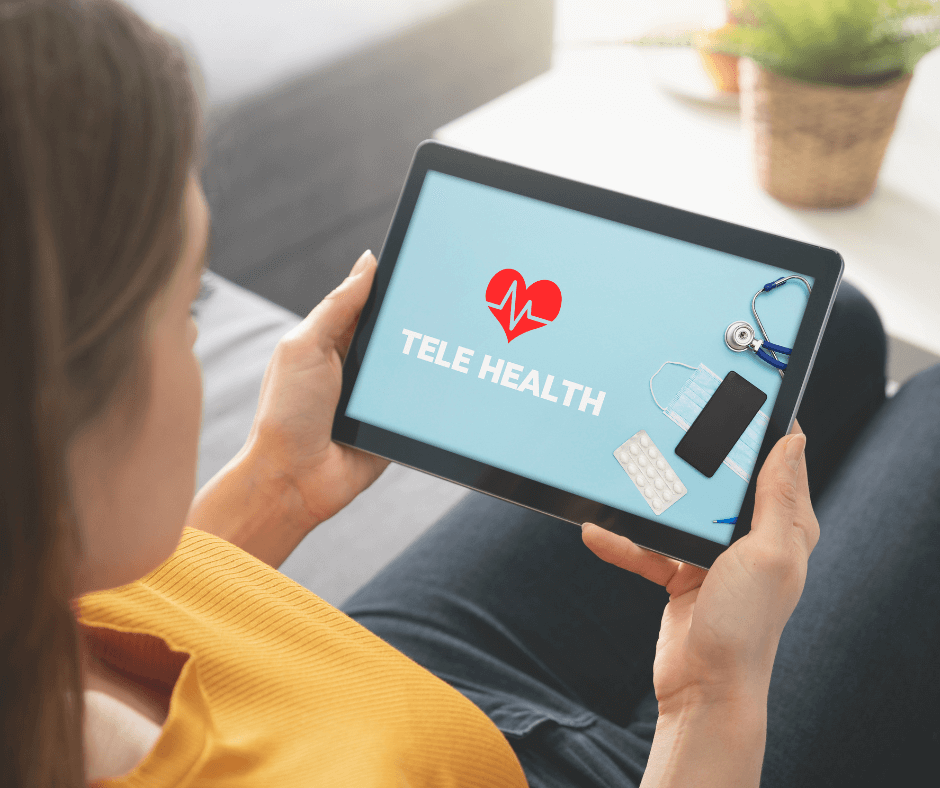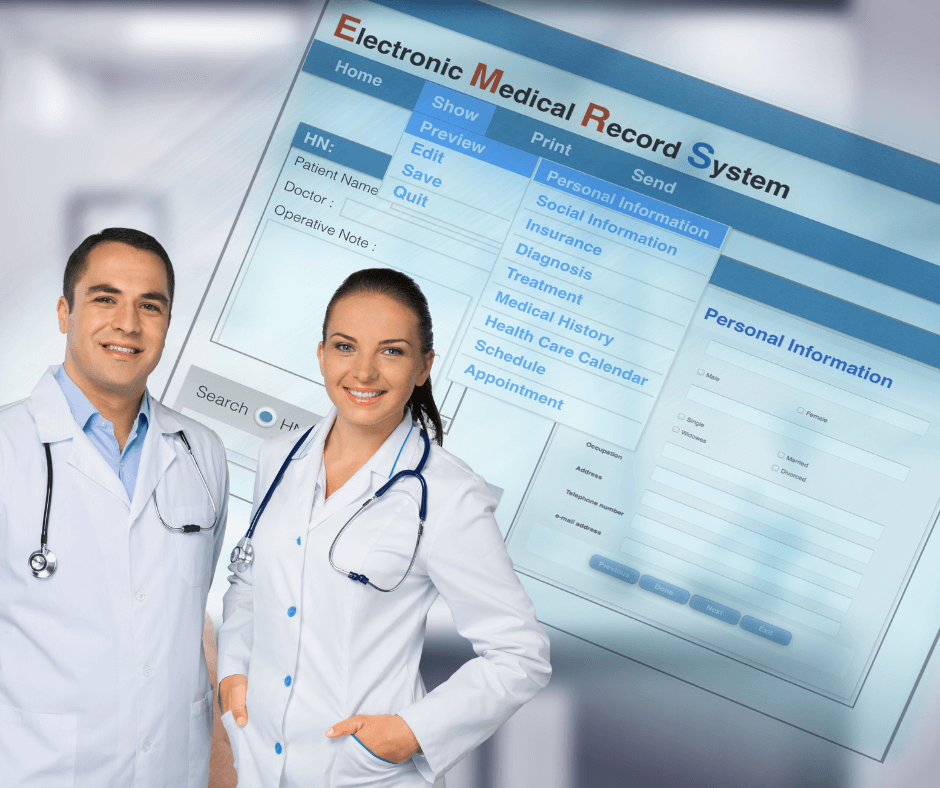Top 7 Benefits of Outsourcing Medical Billing and Coding Services for Your Practice Discover the advantages of outsourcing medical billing and coding services to experts. Learn how it can streamline your practice, reduce errors, and improve revenue cycles. Read on for more information. As a medical professional, you know that billing and coding can be a time-consuming and complicated process. It requires accuracy, attention to detail, and knowledge of constantly changing regulations. That's why outsourcing medical billing and coding services has become a popular solution for many healthcare providers. In this post, we'll explore the benefits of outsourcing these services for your practice. Streamline your practice operations - Outsourcing medical billing and coding services can help you save time and streamline your practice operations. Instead of spending hours on billing and coding tasks, you can focus on patient care and other core activities. Reduce errors and rejections - Medical billing and coding errors can be costly for your practice. Outsourcing to experts who specialize in this area can reduce the risk of errors and rejections, which can ultimately improve your revenue cycle. Increase revenue - With accurate coding and timely submissions, outsourcing medical billing and coding services can help you increase your revenue. It can also help you identify and correct any potential revenue leaks. Stay up-to-date with regulations - Outsourcing to a reputable medical billing and coding company can ensure that you stay up-to-date with the latest regulations and compliance requirements. This can help you avoid penalties and fines. Access to expertise - Medical billing and coding companies employ experts who are trained and experienced in this field. By outsourcing, you can access their expertise without having to invest in training and hiring your own staff. Improve patient satisfaction - Accurate and timely billing can improve patient satisfaction. Outsourcing can ensure that patients receive clear and concise bills, which can reduce confusion and frustration. Cost-effective solution - Outsourcing medical billing and coding services can be a cost-effective solution for your practice. You can avoid the expenses associated with hiring and training your own staff, as well as investing in software and equipment Outsourcing medical billing and coding services can offer many benefits for your practice. It can streamline your operations, reduce errors, increase revenue, and improve patient satisfaction. By choosing a reputable and experienced provider, you can ensure that your billing and coding needs are taken care of, while you focus on providing quality patient care.
0 Comments
How to Successfully Appeal a Medical Prior Authorization Denial: A Step-by-Step Guide Learn how to appeal a medical prior authorization denial with our comprehensive guide that includes actionable tips and expert advice from GoHealthcare Practice Solutions. Dealing with a medical prior authorization denial can be a frustrating experience for both patients and healthcare providers. It's essential to know how to navigate the appeals process to ensure the best possible outcome. In this blog post, we'll guide you through the steps to appeal a medical prior authorization denial effectively. As experts in the field, GoHealthcare Practice Solutions is here to help you every step of the way. Visit our website at https://www.gohealthcarellc.com for more information. Step 1: Review the Denial Letter When you receive a medical prior authorization denial, the first thing you should do is carefully review the denial letter. This letter will provide you with essential information about why your request was denied and how to initiate the appeals process. Step 2: Gather Supporting Documents Collect all relevant documentation, including medical records, physician's notes, and any additional evidence that supports the medical necessity of the treatment or service. These documents will be critical in building a strong appeal case. Step 3: Write a Letter of Appeal Compose a letter of appeal that clearly and concisely outlines the reasons for your request. Be sure to include the patient's name, insurance information, and any relevant medical history. Additionally, highlight the supporting documents you have gathered and emphasize the medical necessity of the treatment. Step 4: Submit the Appeal Submit your appeal, along with all supporting documentation, to the appropriate insurance company or payer. Be sure to follow their specific guidelines and meet any deadlines they have in place. Step 5: Follow Up on the Appeal After submitting your appeal, be proactive in following up with the insurance company to ensure they have received it and are actively reviewing your case. Keep track of any communication and make note of any additional information or documentation they request. Step 6: Be Prepared for Additional Steps In some cases, the appeals process may involve additional steps, such as peer-to-peer reviews or independent medical reviews. Be prepared to provide any necessary information and engage with the process as needed. Step 7: Consult with Experts Navigating the appeals process can be complex, and it's essential to have knowledgeable experts on your side. GoHealthcare Practice Solutions is here to help you with all aspects of the medical prior authorization process, including appealing denials. Visit our website at https://www.gohealthcarellc.com to learn more about our services and how we can assist you. By following these steps, you'll be well-prepared to appeal a medical prior authorization denial effectively. Remember that persistence and attention to detail are key components of a successful appeal. Good luck! Reading References and Sources:
7 Outstanding Patient Portal Solutions for Today's Healthcare Providers Discover 7 exceptional patient portal solutions for healthcare providers that enhance patient engagement, streamline communication, and improve overall patient care. As a healthcare provider, you're always on the lookout for effective tools to improve patient care and communication. Patient portal solutions have become an essential part of healthcare practices, offering a myriad of benefits to both patients and providers. In this blog post, we'll explore 7 outstanding patient portal solutions for healthcare providers that deliver on this promise, and how they can help you take your practice to new heights. Elation Health's Patient Passport Patient Passport by Elation Health is one of the top patient portal solutions for healthcare providers, enabling easy access to medical records, appointment scheduling, and secure messaging. With a user-friendly interface, patients can manage their health information and communicate with their healthcare team seamlessly. This patient portal solution also includes telemedicine capabilities, making it convenient for healthcare providers to conduct virtual appointments. NextGen Healthcare's Patient Portal NextGen Healthcare offers a comprehensive patient portal solution that integrates seamlessly with their electronic health record (EHR) system. This patient portal solution allows healthcare providers to access and manage patient information securely while offering patients the ability to view test results, schedule appointments, and request prescription refills. With a customizable interface, NextGen Healthcare's patient portal can be tailored to suit the unique needs of each practice. Athenahealth's athena Communicator As part of Athenahealth's suite of services, athena Communicator is a top-notch patient portal solution for healthcare providers. It streamlines communication between patients and providers through secure messaging, appointment scheduling, and billing management. This patient portal solution is designed to enhance patient engagement by offering personalized health content and resources based on individual health needs. CureMD's Patient Portal CureMD's patient portal solution is designed to facilitate communication between healthcare providers and their patients. This user-friendly portal enables patients to access their medical records, schedule appointments, view lab results, and request prescription refills. For healthcare providers, CureMD's patient portal offers tools for appointment management, secure messaging, and patient education resources. eClinicalWorks' healow Healow, the patient portal solution by eClinicalWorks, is a robust platform that improves patient engagement and streamlines communication between patients and healthcare providers. With features like appointment scheduling, prescription refill requests, and secure messaging, healow simplifies the patient-provider interaction. This patient portal solution also includes telemedicine capabilities, allowing healthcare providers to offer virtual care when needed. AdvancedMD's Patient Portal AdvancedMD's patient portal solution is designed to empower patients and streamline healthcare providers' workflows. This patient portal solution offers secure messaging, appointment scheduling, and access to health records. With a focus on patient engagement, AdvancedMD's patient portal includes educational resources and personalized health content to help patients better understand their health conditions. Greenway Health's Patient Portal Greenway Health's patient portal solution is a versatile tool for healthcare providers looking to improve patient engagement and communication. This patient portal solution enables patients to access their health records, request prescription refills, and schedule appointments. Additionally, Greenway Health's patient portal includes tools for healthcare providers to manage appointments, securely communicate with patients, and track patient satisfaction. These 7 outstanding patient portal solutions for healthcare providers can help enhance patient engagement, streamline communication, and improve overall patient care. By selecting the right patient portal solution for your practice, you can build stronger relationships with your patients and empower them to take control of their health. The Future of Healthcare: A Comprehensive Guide to Telemedicine Services Discover the benefits of telemedicine services and learn how they're changing the healthcare industry. From virtual consultations to remote monitoring, this guide covers everything you need to know about telemedicine. Telemedicine services have been rapidly gaining popularity in the medical practice industry, especially in the midst of the COVID-19 pandemic. With the need for social distancing, remote healthcare services have become a necessity. Telemedicine services allow patients to receive medical care from the comfort of their own homes, while also reducing the risk of exposure to the virus. In this blog post, we'll discuss everything you need to know about telemedicine services and how they're transforming the healthcare industry. What is Telemedicine? Telemedicine is the use of telecommunication and technology to provide medical care to patients remotely. It includes virtual consultations, remote monitoring, and electronic prescriptions, among other services. Telemedicine services are delivered through various digital devices such as smartphones, tablets, and computers. The Benefits of Telemedicine Services Telemedicine services have numerous benefits, including improved accessibility, cost-effectiveness, and convenience. Patients can receive medical care without having to leave their homes, which eliminates travel time and expenses. Additionally, telemedicine services can help reduce the spread of infectious diseases, such as COVID-19, by minimizing in-person interactions between patients and healthcare providers. Types of Telemedicine Services There are several types of telemedicine services available to patients, including virtual consultations, remote monitoring, and electronic prescriptions. Virtual consultations allow patients to consult with healthcare providers remotely, either through video conferencing or phone calls. Remote monitoring involves the use of digital devices to monitor a patient's health status, such as blood pressure or glucose levels. Electronic prescriptions allow healthcare providers to prescribe medications to patients digitally. Telemedicine Services for Mental Health Telemedicine services are also available for mental health care. Telepsychiatry allows patients to receive mental health treatment remotely, which is especially important during the COVID-19 pandemic. Telepsychiatry services include virtual consultations, online therapy, and support groups. Telemedicine Services and Insurance Many insurance companies now cover telemedicine services, making it more accessible to patients. Medicare and Medicaid also cover certain telemedicine services, although coverage varies by state. Patients should check with their insurance providers to determine their coverage for telemedicine services. Telemedicine services are revolutionizing the healthcare industry by improving accessibility, reducing costs, and increasing convenience for patients. With the ongoing COVID-19 pandemic, the need for remote healthcare services has become even more apparent. Whether you're a patient or a healthcare provider, understanding the benefits and types of telemedicine services available can help you make informed decisions about your healthcare. The Ultimate Guide to Outsourcing Medical Billing and Coding Services for Your Practice Discover the benefits of outsourcing medical billing and coding services for your practice. Learn how to choose the right provider and what to look for in a quality service. Improve your practice's bottom line with this comprehensive guide. As a medical professional, you understand the importance of proper medical billing and coding. However, managing these tasks in-house can be time-consuming and resource-intensive, taking time away from providing quality care to your patients. Outsourcing medical billing and coding services can help streamline your practice's operations and improve your bottom line. In this article, we'll take a closer look at what medical billing and coding services are, why outsourcing these tasks is beneficial, and how to choose the right provider for your practice. We'll also provide some tips on what to look for in a quality medical billing and coding service. What are Medical Billing and Coding Services? Medical billing and coding services are professional services that handle the administrative tasks of submitting and processing medical insurance claims on behalf of healthcare providers. These services ensure that medical bills are accurate, complete, and compliant with regulatory requirements. Why Outsource Medical Billing and Coding Services? Outsourcing medical billing and coding services can provide numerous benefits for your practice, including:
How to Choose the Right Medical Billing and Coding Provider When choosing a medical billing and coding provider, it's important to consider several factors, including:
Outsourcing medical billing and coding services can provide numerous benefits for your practice, including improved accuracy and compliance, faster payment processing, and reduced administrative workload. When choosing a medical billing and coding provider, it's important to consider experience, expertise, technology, communication, and pricing. With the right provider, you can improve your practice's bottom line and focus on providing quality patient care. 12 Proven Strategies to Skyrocket Your Medical Practice Marketing Success Discover 12 proven medical practice marketing strategies that will help you attract new patients, retain existing ones, and ultimately grow your medical practice in a competitive healthcare landscape. In today's rapidly evolving healthcare environment, it's more important than ever for medical practices to invest in effective marketing strategies. With an increasing number of patients searching for medical providers online, it's crucial to stand out and make a lasting impression. Here are 12 proven medical practice marketing strategies that will help your practice thrive and grow in a competitive landscape. Optimize Your Website for Medical Practice Marketing The foundation of any successful medical practice marketing campaign is an optimized website. Ensure your website is user-friendly, mobile-responsive, and contains relevant and updated information about your practice. Include clear calls-to-action, and make sure patients can easily schedule appointments or contact you with questions. Develop a Strong Online Presence In this digital age, a solid online presence is a vital component of medical practice marketing. Utilize search engine optimization (SEO) to increase your visibility on search engine results pages. Claim your Google My Business listing and manage your online reviews to improve your practice's reputation. Leverage Social Media for Medical Practice Marketing Social media platforms like Facebook, Instagram, and LinkedIn can be valuable tools for medical practice marketing. Share engaging content, respond to comments, and interact with your audience to build trust and foster relationships with potential patients. Use Content Marketing to Educate and Engage Content marketing is an essential aspect of medical practice marketing, allowing you to showcase your expertise and provide valuable information to your audience. Create a blog with articles addressing common patient concerns, FAQs, and medical news updates. Share your content on social media and through email marketing campaigns. Incorporate Video Marketing Videos can be a powerful medical practice marketing tool, as they provide a more personal and engaging way to connect with your audience. Create educational videos, patient testimonials, and behind-the-scenes footage of your practice to share on your website and social media channels. Offer Telemedicine Services Telemedicine is becoming increasingly popular among patients. Offering telemedicine services can significantly enhance your medical practice marketing efforts by providing patients with convenient and accessible care options. Nurture Patient Relationships Through Email Marketing Email marketing remains one of the most effective medical practice marketing strategies. Keep your patients informed about upcoming events, practice news, and health tips, and use personalized messaging to strengthen patient relationships. Invest in Paid Advertising Consider incorporating paid advertising into your medical practice marketing strategy. Google Ads and Facebook Ads can be particularly effective in targeting specific demographics and driving new patient acquisition. Host Webinars and Virtual Events Hosting webinars and virtual events on relevant healthcare topics can establish your practice as an industry leader and enhance your medical practice marketing efforts. Promote these events on social media and through email marketing to reach a wider audience. Implement a Patient Referral Program Patient referrals are a powerful form of medical practice marketing. Encourage your existing patients to refer friends and family by offering incentives or discounts on services. Monitor and Measure Your Medical Practice Marketing Efforts It's crucial to track the success of your medical practice marketing strategies. Analyze your website traffic, social media engagement, and patient acquisition to refine your marketing efforts and optimize your return on investment. Partner with Local Businesses and Community Organizations Collaborate with local businesses and community organizations to strengthen your medical practice marketing. Sponsor local events, offer joint promotions, or provide educational seminars to increase your visibility and reputation within the community. Revolutionizing Chronic Care Management with Remote Patient Monitoring Technology Discover the numerous benefits and applications of remote patient monitoring technology for chronic care management, transforming how patients and healthcare professionals interact. Chronic care management has seen a significant transformation with the advent of remote patient monitoring technology. This cutting-edge solution has revolutionized healthcare by enabling healthcare providers to monitor patients continuously, ensuring timely intervention and improved outcomes. In this article, we will explore the various aspects of remote patient monitoring technology for chronic care management and its growing importance in today's healthcare landscape. Enhancing Patient Engagement Remote patient monitoring technology for chronic care management has made it easier for patients to be actively involved in their care. By using wearable devices or sensors to track vital signs, patients can monitor their health and communicate with healthcare providers in real-time. This increased engagement can lead to better adherence to treatment plans and improved overall health outcomes. Improved Quality of Care Healthcare providers can use remote patient monitoring technology to continuously track a patient's health data. This constant monitoring allows for the early detection of any abnormalities or exacerbations, ensuring that timely interventions can be made. As a result, remote patient monitoring technology for chronic care management leads to improved quality of care and better patient outcomes. Cost-Effective Healthcare Solutions One of the most significant benefits of remote patient monitoring technology for chronic care management is its cost-effectiveness. By enabling healthcare providers to monitor patients remotely, the need for frequent in-person visits is reduced. This leads to significant savings for both patients and healthcare systems, making chronic care management more affordable and accessible. Reducing Hospital Readmissions Remote patient monitoring technology plays a crucial role in reducing hospital readmissions for chronic care patients. By continuously monitoring patients' health data, healthcare providers can identify early signs of complications and intervene promptly. This helps prevent unnecessary hospitalizations, reducing the burden on healthcare systems and improving patient outcomes. Facilitating Personalized Care Remote patient monitoring technology for chronic care management allows healthcare providers to tailor care plans based on individual patient needs. By analyzing the collected data, providers can identify trends and patterns unique to each patient, leading to personalized care plans that are more effective in managing chronic conditions. Supporting Caregiver Collaboration Remote patient monitoring technology for chronic care management fosters better collaboration between healthcare providers, caregivers, and patients. By sharing real-time health data, all parties can work together to ensure that the patient receives the best possible care. This collaborative approach can lead to improved patient outcomes and overall satisfaction. Empowering Rural Healthcare For patients living in rural areas, access to healthcare can be a significant challenge. Remote patient monitoring technology for chronic care management helps bridge this gap by allowing healthcare providers to monitor patients remotely, regardless of their location. This ensures that patients in rural areas receive the same level of care as those in urban settings, improving health equity. Remote patient monitoring technology for chronic care management has brought about a paradigm shift in how healthcare providers and patients interact. By enhancing patient engagement, improving the quality of care, reducing costs, and facilitating personalized care, this technology has proven to be an invaluable tool in managing chronic conditions. As healthcare continues to evolve, the importance of remote patient monitoring technology for chronic care management will only continue to grow. 10 Ways Orthopedic EHR Transforms Patient Care and Efficiency in Orthopedic Practices Discover 10 ways orthopedic EHR software is transforming patient care and efficiency in orthopedic practices, leading to better patient outcomes and streamlined workflows. Orthopedic practices are always looking for ways to improve patient care and streamline workflows. Implementing an orthopedic EHR (Electronic Health Record) system is a game-changing move for many practices, as it helps enhance the quality of care, increase efficiency, and reduce errors. In this blog post, we will explore 10 ways orthopedic EHR is transforming patient care and efficiency in orthopedic practices. Comprehensive Patient Records Orthopedic EHR allows healthcare providers to maintain detailed, up-to-date patient records. These records include patient demographics, medical history, diagnoses, treatments, and much more. Having access to comprehensive patient data enables orthopedic specialists to make informed decisions about patient care, leading to better outcomes. Streamlined Communication Orthopedic EHR systems facilitate seamless communication between healthcare providers, patients, and other stakeholders. This allows orthopedic practices to coordinate care more efficiently and ensure that everyone involved in a patient's care has access to the necessary information. Improved Diagnostic Accuracy Orthopedic EHR software often comes with built-in clinical decision support tools that can help healthcare providers make more accurate diagnoses. These tools analyze patient data and provide suggestions based on established guidelines, leading to more accurate diagnoses and more effective treatment plans. Enhanced Patient Engagement Many orthopedic EHR systems offer patient portals that enable patients to access their medical records, schedule appointments, and communicate with healthcare providers. This increased engagement can lead to better compliance with treatment plans and improved patient satisfaction. Efficient Scheduling and Resource Management Orthopedic EHR systems can help practices manage their schedules and resources more effectively. This includes tracking patient appointments, managing staff schedules, and allocating resources such as exam rooms and equipment. Seamless Integration with Medical Devices Orthopedic EHR software can integrate with various medical devices, such as imaging equipment, allowing healthcare providers to access diagnostic images and reports directly within the EHR. This streamlines workflows and ensures that critical information is easily accessible. E-Prescribing Capabilities Orthopedic EHR systems often include e-prescribing functionality, which allows healthcare providers to send prescriptions electronically to pharmacies. This can help reduce medication errors, improve patient safety, and save time for both providers and patients. Customizable Templates and Workflow Orthopedic EHR software is designed to accommodate the unique needs of orthopedic practices. Many systems offer customizable templates and workflows that can be tailored to meet the specific requirements of a practice, helping to streamline processes and increase efficiency. Enhanced Security and Compliance Orthopedic EHR systems are built with security and compliance in mind. They adhere to strict regulations, such as HIPAA, to ensure that patient data is protected and confidential. Additionally, these systems often include features such as audit trails and access controls to help practices maintain compliance with industry standards. Improved Financial Management Orthopedic EHR software can help practices manage their finances more effectively by automating billing processes and providing real-time financial analytics. This enables orthopedic practices to identify trends, monitor revenue, and make informed decisions about their financial strategies. Orthopedic EHR is transforming patient care and efficiency in orthopedic practices by providing comprehensive patient records, streamlining communication, improving diagnostic accuracy, and much more. With the adoption of orthopedic EHR systems, healthcare providers can enhance the quality of care, increase efficiency, and ultimately, improve patient outcomes. Top 10 Telemedicine Software Solutions Revolutionizing Healthcare Explore the top telemedicine software solutions that are transforming the healthcare landscape, offering greater accessibility and efficiency in medical services. The world of healthcare is constantly evolving, and telemedicine software solutions are at the forefront of this transformation. As more people seek medical services remotely, telemedicine software has become a crucial part of modern healthcare delivery. In this blog post, we'll dive into the top 10 telemedicine software solutions that are revolutionizing the industry and ensuring patients receive the care they need, no matter where they are. Teladoc Teladoc has earned its reputation as one of the leading telemedicine software solutions in the market. With an easy-to-use interface and a vast network of healthcare professionals, patients can access quality medical services with just a few clicks. The platform's features include video consultations, secure messaging, and appointment scheduling, making it a comprehensive telemedicine software choice. Amwell Amwell is another popular telemedicine software, offering an extensive range of services to cater to various medical needs. With its customizable platform, healthcare providers can integrate Amwell's telemedicine software into their existing systems seamlessly. The software supports video consultations, chat functionality, and even integrates with electronic health records (EHR) systems for a smoother workflow. Doxy.me Doxy.me stands out as a secure and user-friendly telemedicine software that does not require patients to download any apps or create accounts. Its HIPAA-compliant platform offers video, audio, and chat consultations, making it an excellent choice for healthcare providers looking for a simple, yet effective telemedicine software solution. eVisit eVisit's telemedicine software is designed to help healthcare providers streamline their virtual care services. The platform features a user-friendly interface, customizable workflows, and seamless EHR integration. Patients can access medical care through video consultations, secure messaging, and even obtain electronic prescriptions. MDLive MDLive is a telemedicine software that connects patients with a vast network of medical professionals. The platform supports video consultations, secure messaging, and appointment scheduling. MDLive also offers a mobile app, making it convenient for patients and healthcare providers to access telemedicine services on the go. SnapMD SnapMD's Virtual Care Management (VCM) telemedicine software provides a comprehensive solution for healthcare providers to manage virtual care services. The platform is fully customizable, HIPAA-compliant, and offers features such as video consultations, secure messaging, and EHR integration. Medici Medici is a telemedicine software that focuses on enabling healthcare providers to offer remote consultations while maintaining the personal touch. The platform supports video, audio, and chat consultations, as well as electronic prescriptions and appointment scheduling. Medici's telemedicine software also offers a mobile app for added convenience. SimplePractice SimplePractice is a telemedicine software designed specifically for therapists, counselors, and wellness professionals. The platform is HIPAA-compliant and offers features such as video consultations, secure messaging, and EHR integration. Additionally, SimplePractice's telemedicine software includes practice management tools to help streamline administrative tasks. Kareo Kareo's telemedicine software is designed to help healthcare providers offer virtual care services efficiently. The platform includes features such as video consultations, secure messaging, and EHR integration. Kareo's telemedicine software also offers practice management tools to help healthcare providers manage billing, scheduling, and documentation. AnywhereCare AnywhereCare is a telemedicine software that offers a secure and user-friendly platform for healthcare providers to deliver virtual care services. The platform supports video and audio consultations, secure messaging, and EHR integration. AnywhereCare's telemedicine software is also accessible on mobile devices for added Harnessing the Power of Electronic Health Record Systems for Small Practices: Top 5 Picks Dive into our top 5 picks for electronic health record systems designed specifically for small practices, and discover how they can optimize your clinic's workflow and patient care. Electronic health record (EHR) systems for small practices have emerged as a critical tool for optimizing workflow, enhancing patient care, and improving overall efficiency. These systems have been designed specifically for small practices to help them keep up with the ever-changing landscape of healthcare. In this article, we'll explore the top 5 electronic health record systems for small practices that will help you streamline your medical practice. Kareo: The Comprehensive EHR Solution Kareo is a cloud-based electronic health record system specifically tailored for small practices, offering a comprehensive suite of features. The platform combines EHR, practice management, and billing, allowing you to manage every aspect of your practice in one place. Kareo's electronic health record system simplifies your daily tasks and enables you to focus on what matters most – providing quality patient care. AdvancedMD: Seamless Integration and Customization AdvancedMD is another excellent option for small practices in need of an electronic health record system. With an intuitive and user-friendly interface, this EHR software simplifies your daily tasks and reduces the time spent on administrative work. AdvancedMD's electronic health record system is designed to integrate seamlessly with other software and can be customized to fit the unique needs of your practice, making it a versatile choice for small practices. eClinicalWorks: Robust EHR with Telehealth Capabilities eClinicalWorks is a well-established electronic health record system that provides robust EHR solutions for small practices. With built-in telehealth capabilities, eClinicalWorks allows you to offer virtual consultations and expand your practice's reach. This electronic health record system is an excellent choice for small practices looking to adapt to the growing demand for telemedicine services. DrChrono: Flexible and Affordable EHR for Small Practices DrChrono is a versatile electronic health record system for small practices that combines EHR, practice management, and medical billing in a single platform. The system is known for its flexibility and affordability, making it an attractive choice for small practices with budget constraints. DrChrono's electronic health record system also offers customizable templates, ensuring that your EHR can be tailored to the specific needs of your practice. Greenway Health: Streamlined EHR for Enhanced Patient Care Greenway Health is an electronic health record system for small practices that focuses on streamlining workflows and enhancing patient care. With an easy-to-use interface and customizable templates, Greenway Health's EHR software is designed to improve efficiency and help you provide the best possible care to your patients. This electronic health record system also integrates seamlessly with other software, ensuring that your small practice has access to all the tools it needs to succeed. In conclusion, implementing the right electronic health record system for your small practice can make a world of difference in the way you manage your workflow, patient care, and overall efficiency. Each of the electronic health record systems mentioned above caters to the unique needs of small practices, and choosing one that aligns with your specific requirements can help you reap the maximum benefits of EHR technology. 10 Proven Medical Practice Marketing Strategies to Attract New Patients and Grow Your Business4/21/2023 10 Proven Medical Practice Marketing Strategies to Attract New Patients and Grow Your Business Discover the top 10 medical practice marketing strategies, including long-tail keyword phrases, to help you attract new patients and grow your practice. Learn from industry experts and make your medical business stand out. 10 Proven Medical Practice Marketing Strategies to Attract New Patients and Grow Your Business Growing a medical practice in today's competitive landscape requires innovative marketing strategies that target new patients and keep existing ones engaged. In this blog post, we explore the top 10 medical practice marketing strategies to help you attract new patients and grow your practice. By implementing these techniques, you can set your medical business apart and ensure long-term success. Optimize your website for search enginesEnsure your website is optimized for search engines using long-tail keyword phrases relevant to your medical practice. This will improve your search engine rankings and make it easier for potential patients to find you online. Don't forget to optimize your website for mobile devices, as well (1). Create valuable contentPublish engaging and informative content on your website and blog. Share patient success stories, industry news, and helpful tips to build trust and establish yourself as an authority in your field (2). Leverage social mediaMaintain an active presence on social media platforms, such as Facebook, Twitter, and Instagram, to connect with your target audience, share content, and promote your services (3). Implement email marketingBuild an email list of current and prospective patients, and send out regular newsletters with relevant content and promotional offers. This will help keep your practice top-of-mind (4). Offer telemedicine servicesTelemedicine is becoming increasingly popular among patients. Offering virtual consultations and online appointment scheduling can attract new patients and improve patient retention (5). Utilize online advertisingInvest in online advertising, such as Google Ads and Facebook Ads, to target potential patients based on location, demographics, and interests (6). Encourage patient reviewsPositive online reviews from satisfied patients can greatly impact your practice's reputation. Encourage your patients to leave reviews on platforms like Google My Business and Yelp (7). Host educational eventsOrganize webinars, workshops, or seminars on relevant health topics to showcase your expertise and attract new patients who are interested in learning more about their health (8). Establish strategic partnershipsCollaborate with local businesses and healthcare professionals to create referral networks and expand your reach in the community (9). Monitor and analyze your marketing effortsRegularly track and evaluate your marketing campaigns to identify what's working and make data-driven decisions to optimize your strategies (10). By implementing these medical practice marketing strategies, you can attract new patients, grow your practice, and establish yourself as a leader in your field. How Technology is Transforming Medical Prior Authorization for Better Patient Care Explore the role of technology in streamlining medical prior authorization processes, improving efficiency, and enhancing patient care with innovative solutions. Medical prior authorization (PA) has long been a time-consuming and challenging process for healthcare providers and patients alike. But with advancements in technology, the landscape is changing rapidly. This article will discuss how technology is streamlining the medical prior authorization process, leading to improved efficiency and better patient care. We'll also take a look at GoHealthcare Practice Solutions, a company that offers cutting-edge solutions in this domain. Electronic Prior Authorization (ePA) Electronic prior authorization (ePA) systems have emerged as an essential tool for automating and expediting the PA process. By using ePA, healthcare providers can submit PA requests electronically, reducing the need for manual paperwork and phone calls. This saves time and effort for both providers and insurance companies, resulting in faster approval times and better patient care. Artificial Intelligence (AI) and Machine Learning (ML) AI and ML algorithms are increasingly being utilized to analyze and process medical prior authorization requests. These systems can quickly assess large volumes of data, identify patterns, and make predictions on whether a request will be approved or denied. This can significantly speed up the PA process, allowing providers to focus more on patient care. Integration with Electronic Health Records (EHR) Integrating medical prior authorization systems with electronic health records (EHR) can further streamline the process. By allowing providers to access and submit PA requests directly from their EHR systems, time-consuming tasks such as data entry and documentation can be reduced. This leads to a more efficient and seamless workflow for healthcare providers. Telemedicine and Remote Monitoring Technology has also enabled healthcare providers to incorporate telemedicine and remote monitoring into the prior authorization process. This allows patients to receive care and undergo necessary evaluations remotely, which can reduce the need for in-person appointments and associated PA requests. GoHealthcare Practice Solutions: A Leader in Streamlining Medical Prior Authorization GoHealthcare Practice Solutions is a company that offers innovative solutions to help healthcare providers streamline the medical prior authorization process. With their state-of-the-art technology and dedicated team, they can help reduce the administrative burden on providers and improve the overall efficiency of the PA process. Visit their website at https://www.gohealthcarellc.com to learn more about their services and how they can help your practice. Technology is playing a crucial role in streamlining medical prior authorization processes, improving efficiency, and enhancing patient care. By adopting innovative solutions such as ePA, AI, and EHR integration, healthcare providers can save time, reduce administrative burdens, and focus more on delivering quality care to their patients. Companies like GoHealthcare Practice Solutions are at the forefront of this transformation, providing cutting-edge tools and services that help providers navigate the ever-evolving PA landscape. 10 Effective Patient Engagement Strategies for Medical Practices Learn the top 10 strategies for engaging patients and improving outcomes in your medical practice. From using technology to personalized communication, these proven methods will help you build lasting relationships with your patients. Patient engagement is becoming increasingly important for medical practices, as it is directly linked to improved health outcomes and patient satisfaction. With the rise of technology and new communication methods, there are many effective ways for medical professionals to engage with their patients. In this article, we will explore the top 10 patient engagement strategies that can help your practice succeed. Use Technology: From telemedicine to patient portals, technology can help you engage with your patients in new and innovative ways. This can lead to improved access to care, increased patient satisfaction, and better health outcomes. Personalize Communication: Patients appreciate personalized communication, so take the time to get to know your patients and their individual needs. Address them by name, use their preferred communication method, and provide information that is relevant to their specific health concerns. Implement Patient Education: Educating patients about their health is essential for patient engagement. Provide educational resources, such as brochures, videos, and webinars, that are easy to understand and accessible. Encourage Patient Feedback: Encouraging patient feedback is an important part of patient engagement. By listening to patient feedback, you can make improvements to your practice and show your patients that you value their opinions. Offer Support Groups: Support groups can be a great way to engage patients and provide emotional support. Consider offering support groups for patients with similar health conditions or concerns. Use Social Media: Social media can be a powerful tool for patient engagement. Use social media to provide health tips, promote events, and engage with patients in real-time. Simplify the Check-in Process: Simplifying the check-in process can help reduce patient frustration and improve engagement. Consider using digital check-in methods and providing clear instructions for new patients. Provide Personalized Care Plans: Personalized care plans can help patients feel more engaged in their healthcare. Work with patients to create individualized care plans that address their specific health concerns and goals. Build Trust: Building trust with patients is essential for patient engagement. Be transparent, communicate clearly, and follow through on your promises. Offer Telemedicine Services: Telemedicine can be a convenient way for patients to access care and engage with their healthcare provider. Consider offering telemedicine services for routine check-ups, follow-up appointments, and more. Patient engagement is critical for the success of any medical practice. By implementing these 10 patient engagement strategies, you can improve outcomes, build lasting relationships with your patients, and set your practice apart from the competition. Start by identifying the strategies that are most relevant to your practice and work to implement them today. Sources:
Top 10 Reasons Why Outsourcing Medical Billing and Coding Services is Vital for Your Practice4/20/2023 Top 10 Reasons Why Outsourcing Medical Billing and Coding Services is Vital for Your Practice Learn why outsourcing medical billing and coding services is essential for your practice's success. This comprehensive list highlights the benefits of outsourcing, including improved accuracy, efficiency, and revenue growth. Medical billing and coding services are critical components of any successful medical practice. Without them, practices would struggle to manage their finances and keep track of patient information. However, managing these services in-house can be time-consuming, costly, and prone to errors. That's why many medical practices are turning to outsourcing their billing and coding services to third-party providers. In this article, we will explore the top 10 reasons why outsourcing medical billing and coding services is vital for your practice's success. Improved Accuracy:Medical billing and coding require high levels of accuracy to avoid errors and inaccuracies that can lead to claim rejections and lost revenue. By outsourcing these services, you can rely on trained and experienced professionals who have the necessary knowledge and expertise to handle billing and coding tasks with precision. Reduced Administrative Costs: Outsourcing medical billing and coding services can help you save money by eliminating the need to hire and train additional staff. You can also avoid the costs associated with purchasing and maintaining expensive software and hardware. Increased Efficiency: Outsourcing medical billing and coding services can help you streamline your workflow and reduce the time it takes to process claims. This allows you to focus on providing high-quality care to your patients. Compliance with Industry Regulations: Medical billing and coding regulations are complex and ever-changing. Outsourcing to a reputable provider ensures that your practice remains compliant with all industry regulations, including HIPAA and ICD-10 codes. Access to Advanced Technology: Outsourcing to a third-party provider gives you access to advanced billing and coding technology, which can help you improve your efficiency, accuracy, and revenue growth. Improved Revenue Cycle Management:Outsourcing medical billing and coding services can help you optimize your revenue cycle management. This includes submitting claims promptly, following up on unpaid claims, and managing denials effectively. Enhanced Focus on Patient Care: Outsourcing medical billing and coding services frees up your time and resources, allowing you to focus on providing high-quality care to your patients. Increased Revenue Growth: Outsourcing medical billing and coding services can help you improve your revenue growth by reducing claim denials, accelerating claim processing, and improving overall accuracy. Scalability: Outsourcing medical billing and coding services provides scalability, allowing your practice to expand without the need to hire additional staff or invest in new equipment. Flexibility: Outsourcing medical billing and coding services gives you the flexibility to choose the services that best suit your practice's needs. This includes choosing the level of support you need, the types of services you require, and the frequency of reporting. Outsourcing medical billing and coding services can provide your practice with numerous benefits, including improved accuracy, efficiency, revenue growth, and compliance with industry regulations. By partnering with a reputable provider, you can streamline your workflow, optimize your revenue cycle management, and focus on providing high-quality care to your patients. So, consider outsourcing your medical billing and coding services today and experience the difference it can make to your practice's success. Medical Prior Authorization for Imaging & Diagnostic Tests: Essential Insights for Providers4/19/2023 Medical Prior Authorization for Imaging & Diagnostic Tests: Essential Insights for Providers Navigate the complexities of medical prior authorization for imaging and diagnostic tests with our comprehensive guide, and streamline your healthcare practice with GoHealthcare Practice Solutions. Medical Prior Authorization for Imaging and Diagnostic Tests: What Providers Need to Know As a healthcare provider, understanding the intricacies of medical prior authorization for imaging and diagnostic tests is crucial for streamlining your practice and ensuring timely care for your patients. In this informative guide, we delve into the essential aspects of medical prior authorization and provide valuable resources for making the process more efficient. The Importance of Medical Prior Authorization Medical prior authorization serves as a cost-control measure for insurance companies, helping to avoid unnecessary or repetitive tests. For providers, obtaining authorization is essential to ensure reimbursement for imaging and diagnostic tests. Common Imaging and Diagnostic Tests Requiring Authorization While requirements vary by payer, common imaging and diagnostic tests that typically need prior authorization include:
Understanding Payer Requirements Each insurance company has its own set of guidelines and requirements for medical prior authorization. Providers should familiarize themselves with payer-specific protocols to streamline the authorization process and avoid claim denials. Tips for Streamlining the Prior Authorization Process
GoHealthcare Practice Solutions: Your Partner in Medical Prior Authorization At GoHealthcare Practice Solutions, we understand the challenges providers face in managing medical prior authorization. Our comprehensive services, available at https://www.gohealthcarellc.com, are designed to help you navigate the complexities of prior authorization and improve your practice's efficiency. With a thorough understanding of medical prior authorization for imaging and diagnostic tests, providers can optimize their practice and provide timely, effective care for patients. Turn to GoHealthcare Practice Solutions for expert assistance in navigating this complex process. 10 Proven Patient Engagement Strategies to Boost Your Medical Practice's Success Discover top patient engagement strategies that empower patients, enhance communication, and drive better health outcomes for your medical practice. In today's healthcare landscape, engaging patients is more important than ever. A strong patient engagement strategy not only improves outcomes but also contributes to the success of a medical practice. In this blog post, we'll explore 10 proven patient engagement strategies that you can implement to boost the success of your practice and improve patient care. Utilize Patient Portals Enable your patients to access their medical records, schedule appointments, and communicate with healthcare providers through a user-friendly patient portal. This promotes transparency and empowers patients to take charge of their health. Implement Telemedicine Services Telemedicine services such as video consultations, remote monitoring, and virtual follow-ups can improve patient engagement by offering convenience and accessibility to quality healthcare. Offer Educational Resources Provide patients with informative materials, such as brochures, videos, and blog posts, to help them better understand their medical conditions and treatment options. Leverage Social Media Create a strong online presence by sharing valuable health information, engaging with patients, and promoting your practice on social media platforms. Personalize Patient Experiences Customize patient care by considering individual preferences, needs, and medical histories to ensure an engaging and satisfying experience. Send Appointment Reminders Automated appointment reminders via text, email, or phone calls can help reduce no-shows and enhance patient engagement . Encourage Feedback and Reviews Ask patients to provide feedback and write reviews about their experiences to help improve your practice and build trust with prospective patients. Implement a Chronic Care Management Program Provide ongoing support and resources for patients with chronic conditions to help them better manage their health and improve their quality of life. Facilitate Patient-Provider Communication Promote open communication between patients and healthcare providers through regular follow-ups, easy accessibility, and clear communication channels. Promote Preventative Care Encourage patients to take an active role in their health by offering preventative care services and education on maintaining a healthy lifestyle. Implementing these patient engagement strategies can have a significant impact on the success of your medical practice and the health outcomes of your patients. By focusing on patient empowerment, communication, and convenience, you can foster a strong and loyal patient base while delivering top-notch care. The Importance of Patient Access: Explained Patient access is crucial for the success of healthcare providers. In this blog post, we explore what patient access is, why it's important, and how GoHealthcare Practice Solutions can help. Patient access refers to the process of allowing patients to schedule appointments, access medical records, and communicate with healthcare providers. It's an essential part of healthcare delivery that can greatly impact patient satisfaction, outcomes, and the overall success of healthcare providers. In this blog post, we'll explain why patient access is important and how healthcare providers can improve it. Improved Patient Satisfaction Patient access is directly linked to patient satisfaction. Patients who have easy access to healthcare providers are more likely to have a positive experience and to feel satisfied with their care. Patients want to be able to schedule appointments at convenient times, access medical records online, and communicate with healthcare providers easily. By providing these services, healthcare providers can improve patient satisfaction and retention. Better Outcomes Patient access can also have a significant impact on patient outcomes. When patients have access to their medical records and can communicate with their healthcare providers easily, they are more likely to follow treatment plans and to adhere to medications. This can lead to better health outcomes and a reduced need for hospitalization or emergency care. Increased Efficiency Patient access can also help healthcare providers increase efficiency. By providing online scheduling, patients can schedule appointments without having to call the office. This reduces the amount of time staff spend answering phone calls and scheduling appointments, allowing them to focus on other tasks. Additionally, electronic medical records allow healthcare providers to access patient information quickly, reducing the amount of time spent on administrative tasks. Compliance with Regulations Patient access is also important for compliance with healthcare regulations. The Health Insurance Portability and Accountability Act (HIPAA) requires healthcare providers to protect patient information and to provide patients with access to their medical records. By providing patient access to medical records, healthcare providers can ensure compliance with HIPAA regulations. Competitive Advantage Finally, patient access can provide healthcare providers with a competitive advantage. In today's healthcare market, patients have a choice of providers. By providing convenient and easy access to healthcare services, providers can attract and retain patients. GoHealthcare Practice Solutions offers a range of services to help healthcare providers improve patient access. From online scheduling to electronic medical records, GoHealthcare can help providers improve patient satisfaction, outcomes, and efficiency. Contact us today to learn more. How to Successfully Appeal a Medical Prior Authorization Denial for Healthcare Providers Learn how to appeal a medical prior authorization denial for your patients with our step-by-step guide. Our healthcare practice solutions can help you successfully navigate the appeal process and get the care your patients need. Medical prior authorization is a process used by insurance companies to determine whether a particular medical treatment or service is covered under a patient's plan. Unfortunately, prior authorization denials are common, and can cause significant frustration for both providers and patients. As a healthcare provider, it's important to know how to navigate the appeal process in order to get the best care for your patients. In this post, we'll provide a step-by-step guide on how to successfully appeal a medical prior authorization denial, and how GoHealthcare Practice Solutions can help. Understand the reason for the denial: The first step in appealing a medical prior authorization denial is to understand why the request was denied in the first place. Was it due to a lack of medical necessity? Did the insurance company deem the treatment experimental or investigational? Understanding the specific reason for the denial can help you craft a more effective appeal. Review the insurance company's appeals process: Each insurance company has its own appeals process, so it's important to review the process carefully to ensure that you're following the correct steps. Some insurance companies may require that you submit a written appeal, while others may have an online appeals portal. Gather supporting documentation: When appealing a medical prior authorization denial, it's crucial to provide supporting documentation that demonstrates the medical necessity of the treatment or service. This may include medical records, lab results, and notes from consultations with other healthcare providers. Write a compelling appeal letter: The appeal letter should be concise, but compelling. It should clearly explain why the treatment or service is necessary for the patient's health, and should address the specific reason for the denial. It's important to use language that is easy to understand, and to provide concrete examples whenever possible. Submit the appeal: Once you've gathered all of the necessary documentation and written your appeal letter, it's time to submit the appeal. Be sure to follow the insurance company's guidelines for submission, and keep copies of all of your documentation for your records. Follow up: After you've submitted your appeal, it's important to follow up regularly with the insurance company to ensure that your appeal is being reviewed in a timely manner. If you don't receive a response within a reasonable amount of time, don't be afraid to reach out and ask for an update. At GoHealthcare Practice Solutions, we understand how frustrating it can be to deal with medical prior authorization denials. That's why we offer a range of solutions designed to help healthcare providers navigate the appeal process successfully. From training and education to billing and coding services, we can help you get the care your patients need while minimizing administrative headaches. Top 10 Tips for Conducting Effective Patient Satisfaction Surveys to Boost Your Medical Practice4/17/2023 Top 10 Tips for Conducting Effective Patient Satisfaction Surveys to Boost Your Medical Practice Discover the best practices for conducting patient satisfaction surveys that will yield actionable insights, improving patient care and overall experience at your medical practice. Patient satisfaction is crucial for the success of any medical practice. By conducting patient satisfaction surveys, healthcare professionals can gather valuable feedback to improve patient care and the overall experience. In this blog post, we will delve into the top 10 tips for conducting effective patient satisfaction surveys that will boost your medical practice. Set Clear Goals Before you start, identify the specific objectives you want to achieve with your survey. These goals will help you design a focused and effective questionnaire, enabling you to gather the most relevant data. Keep It Short and Simple Long surveys can deter patients from completing them. Make your survey short, sweet, and easy to understand to increase the response rate. Use a Mix of Question Types Include a combination of open-ended and close-ended questions to gather both quantitative and qualitative data. This will provide you with a comprehensive view of patient satisfaction. Ensure Anonymity and Confidentiality Reassure patients that their feedback will be kept confidential and used only for the purpose of improving patient care. Anonymity can encourage more honest and accurate responses. Choose the Right Distribution Method Select the most appropriate method to distribute your survey, whether it's through email, in-person, or via a mobile app. Consider your patient demographic and their preferences to maximize response rates. Time It Right Administer the survey when the patient's experience is still fresh in their mind. This will result in more accurate and insightful feedback. Address Specific Areas of Patient Care Tailor your questions to address different aspects of patient care, including wait times, physician interactions, cleanliness, and billing. This will help you pinpoint areas for improvement. Be Open to Constructive Criticism Be prepared to receive negative feedback and use it as an opportunity to improve your medical practice. Address any concerns raised by your patients in a timely and professional manner. Analyze and Act on Results Carefully analyze the results of your survey and use the insights to make data-driven decisions. Implement changes and track their impact on patient satisfaction. Communicate Improvements to Patients Inform patients about the changes you've made based on their feedback. This shows that you value their opinions and are committed to improving patient care. Patient satisfaction surveys are an invaluable tool for any medical practice seeking to improve the quality of care and overall patient experience. By following these top 10 tips, you'll be well on your way to conducting effective surveys and reaping the benefits of increased patient satisfaction. Mastering Medical Practice Revenue Cycle Management: Strategies for Financial Health Learn how to manage your medical practice's revenue cycle effectively with expert strategies and tips. Explore the key steps and best practices for maximizing your practice's financial health and profitability. Revenue cycle management (RCM) is the process of managing and optimizing the financial flow of a medical practice. From patient registration and billing to insurance claims and collections, RCM is essential for the financial health of a medical practice. In this blog post, we will explore the key steps and best practices for mastering medical practice revenue cycle management, providing valuable insights and expert strategies for maximizing your practice's financial health and profitability. Streamline Patient Registration and Check-In Process Effective patient registration and check-in process are critical to a successful revenue cycle management. By streamlining the process, you can reduce administrative costs, minimize errors, and improve patient satisfaction. Some of the best practices include:
Optimize Billing and Coding Practices Accurate billing and coding practices are essential for maximizing revenue and reducing claim denials. It's important to stay up-to-date with the latest coding guidelines and regulations to ensure that claims are processed correctly. Some best practices include:
Monitor and Manage Claims Processing Claims processing is a crucial part of the revenue cycle management process. It's important to monitor and manage claims to ensure that they are processed efficiently and accurately. Some best practices include:
Implement Effective Collections Strategies Collections are a critical component of the revenue cycle management process. Effective collections strategies can help to improve cash flow and reduce bad debt. Some best practices include:
Reading References and Sources:
Patient Access: A Complete Guide to its Importance and Benefits Discover the importance of patient access and how it impacts healthcare. Read on to learn more about how GoHealthcare Practice Solutions can help improve your patient access process. Patient access refers to the ability of patients to obtain medical care quickly and efficiently. It encompasses all aspects of the healthcare system, from scheduling appointments to accessing medical records and receiving treatment. Patient access has become increasingly important in recent years, as patients have become more involved in their healthcare decisions and as healthcare providers have sought to improve patient outcomes and reduce costs. Importance of Patient Access:
Benefits of Patient Access:
GoHealthcare Practice Solutions can help healthcare providers improve patient access by offering a range of services, including scheduling and appointment management, patient communication tools, and telehealth solutions. By improving patient access, healthcare providers can improve patient outcomes, increase patient satisfaction, reduce costs, and comply with regulations. Top 10 Specialty-Specific EHR Systems to Transform Your Practice Discover the top 10 specialty-specific EHR systems designed to enhance patient care, streamline workflows, and improve overall practice efficiency. As a healthcare provider, finding the right Electronic Health Record (EHR) system for your specialty can be a game-changer for your practice. Specialty-specific EHR systems cater to the unique needs of various medical specialties, offering tailored features and functionalities to help providers deliver better patient care. In this blog post, we'll explore the top 10 specialty-specific EHR systems that are transforming medical practices across different specialties. Kareo: A Comprehensive EHR for Family Medicine Kareo is an all-in-one, cloud-based EHR system designed specifically for family medicine practices. With Kareo's specialty-specific EHR, you can manage patient records, create customizable templates, and access robust reporting tools, all while streamlining your practice's workflows. AdvancedMD: A Powerful EHR for Psychiatrists AdvancedMD is a leading specialty-specific EHR system that offers psychiatrists a comprehensive platform to manage their practice. The EHR's customizable templates, e-prescribing features, and telehealth capabilities make it an ideal choice for mental health providers. DrChrono: A Versatile EHR for Pediatrics DrChrono is a popular specialty-specific EHR system for pediatric practices, offering customizable templates, growth charts, and vaccine tracking. This intuitive platform helps pediatricians manage their patients' health records with ease. Modernizing Medicine: EHR for Dermatology Modernizing Medicine's specialty-specific EHR system, EMA, is designed specifically for dermatologists. With its intuitive touch-screen interface, customizable templates, and integrated imaging, EMA is an essential tool for dermatology practices. athenahealth: A Comprehensive EHR for Obstetrics and Gynecology athenahealth's specialty-specific EHR system caters to the unique needs of obstetrics and gynecology practices. This EHR system includes features like prenatal care management, customizable templates, and patient engagement tools, making it a top choice for OB/GYN providers. Compulink: EHR for Ophthalmology Compulink's specialty-specific EHR system, Eyecare Advantage, is designed to meet the needs of ophthalmology practices. This EHR system offers customizable templates, integrated diagnostic equipment, and practice management features to help ophthalmologists deliver superior patient care. PrognoCIS: EHR for Pain Management PrognoCIS is a specialty-specific EHR system created to address the needs of pain management providers. With its customizable templates, e-prescribing capabilities, and secure messaging, PrognoCIS is an invaluable tool for pain management practices. ChiroTouch: EHR for Chiropractic ChiroTouch is a specialty-specific EHR system built for chiropractic practices. This EHR system offers customizable templates, automated billing, and powerful reporting tools to help chiropractors streamline their practice. Dentrix Ascend: EHR for Dentistry Dentrix Ascend is a cloud-based, specialty-specific EHR system designed for dental practices. With its intuitive interface, customizable templates, and comprehensive patient management tools, Dentrix Ascend is a must-have for dental providers. TherapyNotes: EHR for Physical Therapy TherapyNotes is a specialty-specific EHR system designed for physical therapists. This EHR system includes customizable templates, integrated billing, and patient scheduling tools to help physical therapists improve their practice efficiency. Specialty-specific EHR systems can greatly enhance the quality of care in various medical specialties. 10 Essential Tips for Conducting Effective Patient Satisfaction Surveys in Your Medical Practice4/13/2023 10 Essential Tips for Conducting Effective Patient Satisfaction Surveys in Your Medical Practice Discover the best practices for creating and analyzing patient satisfaction surveys that drive improvements in patient care and boost your medical practice's success. Patient satisfaction is a crucial aspect of a successful medical practice. By conducting effective patient satisfaction surveys, healthcare providers can gain valuable insights into patient experiences, identify areas for improvement, and ultimately enhance the overall quality of care. In this blog post, we will explore 10 essential tips for designing and implementing patient satisfaction surveys that yield actionable insights and contribute to the success of your medical practice. Define Clear Objectives Before creating your survey, establish clear objectives to guide the design process. This will help you determine the right questions to ask and ensure the survey is focused on gathering relevant data. Keep It Concise Lengthy surveys can be overwhelming for patients. Aim to keep your survey concise and focused on the most important aspects of the patient experience to increase response rates and ensure accurate data collection. Use Simple Language Ensure that your survey questions are easily understood by all patients, regardless of their educational background or language proficiency. Avoid using medical jargon and opt for clear, simple language. Ensure Patient Anonymity Guaranteeing anonymity encourages patients to provide honest feedback. Make sure your survey assures patients that their responses will be kept confidential and that no personally identifiable information will be linked to their answers. Offer Multiple Modes of Participation Different patients may prefer different methods of completing surveys. By offering multiple modes of participation – such as paper, online, or over the phone – you can increase response rates and accommodate various patient preferences. Use a Mix of Question TypesIncorporate both open-ended and close-ended questions in your survey to gather quantitative and qualitative data. This approach will allow you to gain a comprehensive understanding of patient experiences and perceptions. Implement a Systematic Approach to Data AnalysisHaving a systematic approach to analyzing survey data is crucial for identifying patterns, trends, and areas for improvement. Use data analysis tools or work with a professional data analyst to ensure accurate and meaningful interpretations of the results. Communicate Results and ActionsShare the survey findings with your medical staff and discuss the necessary actions to address any issues identified. This will promote transparency, accountability, and a culture of continuous improvement in your practice. Make Changes Based on FeedbackPatient satisfaction surveys are only useful if the insights gained lead to actionable improvements. Be prepared to make changes in your practice based on the feedback received, and monitor the impact of these changes over time. Conduct Regular SurveysRegularly conducting patient satisfaction surveys allows you to track progress, identify emerging trends, and ensure that your practice continues to meet the evolving needs and expectations of your patients. Implementing effective patient satisfaction surveys is vital for understanding and improving the patient experience in your medical practice. By following these 10 essential tips, you can gather valuable insights, make informed decisions, and ultimately enhance the quality of care provided to your patients. References and Sources:
10 Telemedicine Services Revolutionizing Healthcare in 2023 Telemedicine services are on the rise, offering patients and healthcare providers a way to connect remotely. Learn about the top 10 telemedicine services that are revolutionizing healthcare in 2023. Telemedicine services have been on the rise in recent years, but they really took off in 2020 due to the COVID-19 pandemic. With many patients hesitant to visit their doctor's office in person, telemedicine offered a safe and convenient way to receive medical care. As a result, the telemedicine industry has grown rapidly, with new services and technologies being developed to meet the growing demand. In this blog post, we'll explore 10 telemedicine services that are revolutionizing healthcare in 2023. From virtual consultations to remote monitoring, these services are changing the way patients and healthcare providers interact. Virtual Consultations: Telemedicine services like Teladoc and Amwell offer virtual consultations with board-certified doctors, allowing patients to get medical advice from the comfort of their own homes. Remote Monitoring: With remote monitoring services like Biofourmis and Eko, healthcare providers can monitor patients' vital signs and symptoms remotely, reducing the need for in-person visits. Mobile Health Apps: Mobile health apps like MyFitnessPal and Fitbit allow patients to track their health and fitness goals and share that information with their healthcare providers. Wearable Technology: Wearable technology like smartwatches and fitness trackers can monitor a patient's heart rate, sleep patterns, and other health metrics, allowing healthcare providers to make more informed decisions about their care. Telepsychiatry: Telepsychiatry services like Talkspace and BetterHelp offer mental health counseling and therapy sessions via video conferencing, making it easier for patients to access mental health care. Telestroke Care: Telestroke care services like REACH Health and InTouch Health allow neurologists to diagnose and treat stroke patients remotely, improving outcomes and reducing the need for transfers to other hospitals. Digital Therapeutics: Digital therapeutics like Pear Therapeutics and Akili Interactive offer treatments for conditions like addiction and depression that can be accessed remotely via mobile apps. Remote Physical Therapy: Remote physical therapy services like Physitrack and PT Genie offer patients personalized exercise programs that they can complete at home, with guidance from a licensed physical therapist. Teleophthalmology: Teleophthalmology services like Eyenuk and Opternative offer remote eye exams and screenings, making it easier for patients to access vision care. Telepharmacy: Telepharmacy services like Capsule and ZipDrug offer remote prescription filling and delivery, making it easier for patients to get the medications they need without leaving their homes. As you can see, there are many telemedicine services available today that are changing the way patients receive medical care. Whether you're a patient or a healthcare provider, it's worth exploring these services to see how they can benefit you. Denied claims can be a frustrating roadblock for healthcare providers trying to get paid by insurance companies. However, with the right strategies and tactics, providers can successfully appeal these denials and maximize their reimbursements. In this blog post, we'll explore the best practices for appealing denied claims, including understanding the reason for denial, gathering relevant documentation, submitting a timely appeal, and providing additional information as needed. At GoHealthcare Practice Solutions, we specialize in revenue cycle management and can assist healthcare providers with denied claims appeals. Contact us today to learn more about how we can help your practice. APPEALING DENIED CLAIMS: BEST PRACTICES FOR HEALTHCARE PROVIDERS
|

ABOUT THE AUTHOR:
Ms. Pinky Maniri-Pescasio is the Founder of GoHealthcare Consulting. She is a National Speaker on Practice Reimbursement and a Physician Advocate. She has served the Medical Practice Industry for more than 25 years as a Professional Medical Practice Consultant. search hereArchives
July 2024
Categories
All
BROWSE HERE
All
|
- About
- Leadership
- Contact Us
- Testimonials
- READ OUR BLOG
-
Let's Meet in Person
- 2023 ORTHOPEDIC VALUE BASED CARE CONFERENCE
- 2023 AAOS Annual Meeting of the American Academy of Orthopaedic Surgeons
- 2023 ASIPP 25th Annual Meeting of the American Society of Interventional Pain Management
- 2023 Becker's 20th Annual Spine, Orthopedic & Pain Management-Driven ASC Conference
- 2023 FSIPP Annual Conference by FSIPP FSPMR Florida Society Of Interventional Pain Physicians
- 2023 New York and New Jersey Pain Medicine Symposium
- Frequently Asked Questions and Answers - GoHealthcare Practice Solutions
- Readers Questions
Photos from shixart1985 (CC BY 2.0), www.ilmicrofono.it, shixart1985





























































 RSS Feed
RSS Feed